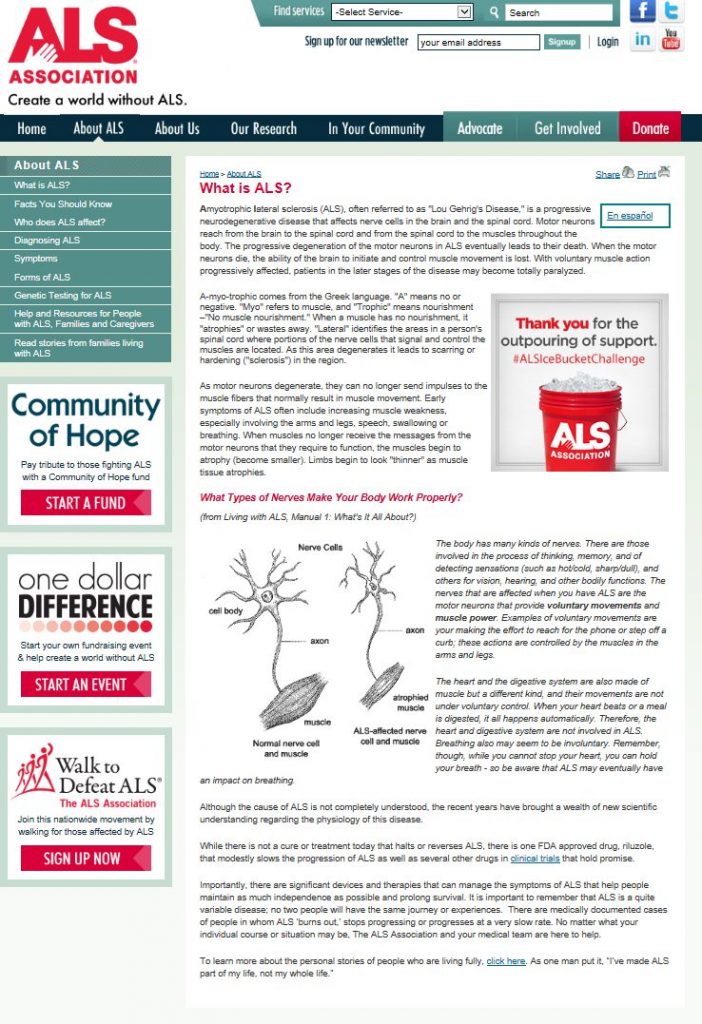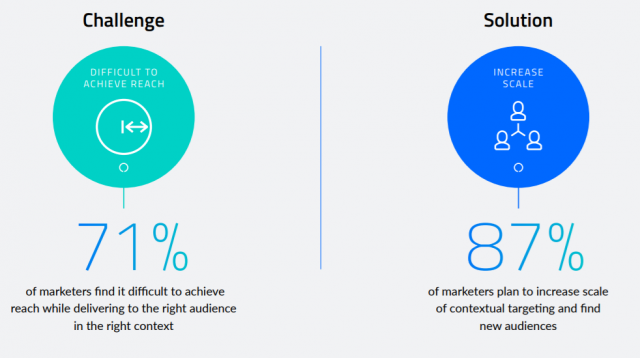Table of Content
With Digital Advertising, advertising online is now about delivering the right message to the targeted audience segment, essentially what is commonly echoed — right message delivered to the right person at the right time.
There are of course different tactics and approaches to achieving that. One which is enjoying a revival in view of the on-going demise of the third-party cookies, is contextual targeting or contextual advertising. You probably might have come across this by now. If you have been shown an ad for a product or service while visiting a webpage where the product or service is related to the content that you are visiting, you have experienced what is known as contextual targeting.

Source: Nielsen Norman Group, contextually relevant contents.
Getting a specific ad delivered to a specific group of viewers can be tricky. Deliver it right, and you would likely be able to attract customers that would lead to conversions, as evident from a study titled “The Context Effect” conducted by IAS and Neuro-Insight. The study indicates that a good 73% of consumers find that contextually relevant ads to be more appealing while improving their perception.
So the million dollar question … how then do you deliver the right message to the right person at the right time? This article aims to walk you through the world of contextual advertising or contextual targeting and help you understand how it can be useful to boost your business.
What is contextual targeting?
Contextual targeting refers to the placement of an ad that are directly relevant to the content being viewed. You probably have seen this many times while visiting some travel related websites. Within the page, you are bombarded with ads that show airline or hotel ads. That’s contextual advertising for you.
The technique is also used by search engines to put up advertisements on their result pages. It is done by matching the keywords in the search query to the content in the ad. Here, the matching is between the content or context of the ad and the content of the website.
Contextual targeting utilizes directly the information within the current session of the user in real-time to triangulate a user’s intentions and interests to a product or service, as opposed to using data collected, stored, and analyzed about that user over a (long) period of time.
With worldwide privacy and data regulations such as GDPR and CCPA enforcing for stricter use of personal data and protection of privacy, there is increasing demand for contextual targeting a non-intrusive, non-creepy technology. There is increasing awareness from consumers worldwide, and public and regulatory pressures are mounting for the industry to restrict or limit the scope of collection of user data. Hence, cookie based ad targeting becomes increasingly limiting and all the major Internet browsers have gone on full steam ahead to limit the use of cookies.
Contextual targeting uses session information, such as the website a user is browsing, to determine the individual’s intentions and interests. Being data that is interpretive and derived from user’s behavior, rather than direct from user information, targeting based upon context is compliant with both public and regulatory sentiments toward privacy. Yay, a win-win for both consumers and advertisers.
As per the statistics from “An Insider’s Look at Media, Brand Safety and Partnerships report from Sizmek,” 87 percent of marketers plan to increase the scale of contextual targeting and find new audiences altogether.

Source: www.komarketing.com
Since the ads are placed by matching and considering the contents viewed by the searcher, contextual ads often garner a higher chance of influencing the users and generating a favorable response.
When a contextually related and relevant ad is shown an interested audience, there is greater chance of achieving higher click-through-rates and conversions. A study conducted by Wishpond shown that the click-through rate (CTR) of a contextual retargeted ad is 10x higher than the CTR of a typical display ad!
CTR at ten times higher, wow!
With the right audience selection and the use of specific keywords, contextual targeting allows you to increase the relevancy of your ad, thereby maximizing the ROI.
What is Contextual traffic?
Imagine scrolling through a website that gives you information about car parts and accessories and getting hit with a dynamic ad for some latest car accessories in the market.
The idea is to target the ad at a section of people who are more likely to hit the “buy” tab. This is where the relevance of the term “contextual traffic” comes in.

Source: https://www.pexels.com/
Contextual traffic is also referred to as a pay-per-view (PPV) form of advertising. Since only the relevant ads are put on a particular website, advertisers are required to pay per view of the ad (irrespective of the user clicking on it).
How does contextual advertising work?
Let’s get down to the real deal. How are contextual ads placed, and what is the working methodology behind it?
As mentioned earlier, the concept used here is hyper-targeted advertising. Ads are placed on relevant websites or blogs by selecting the right keywords and pairing them with the content available on the website.
Google Ads analyses the content to understand the core theme, match it against relevant keywords, topics, demographics, users, and their browsing habits, and places it accordingly.
Users may hence not necessarily be searching for you, but their browsing history and real-time data allows Google Ad Sense to place dynamic content in front of them.
For example, you would have noticed YouTube Ads showcasing relevant products popping up at the right time. Imagine the impact when a user gets to see a brief video of your product while browsing through related content!
The process
Following are the key steps that are followed during contextual targeting:
- Keyword selection: Target keywords, as well as topics and phrases, are added to the Display Network ad groups.
- Google Ads analyses the keywords and co-relates them with matching websites. The software analyzes various features like links, page structure, content, images, etc. displayed on the site. Ads are therefore matched to the website’s central theme.
- Ads are placed.
While the steps mentioned above are the basic process of displaying a contextual ad, modern technology and the use of behavior data has made it far more advanced than this.
Behavioral targeting and Native advertising (discussed later in the article) are some additional tools that are used in the contextual ad formats.
Take a look at our brief video tutorial on Contextual targeting, its relevance, and how it works.
Google AdSense and other service providers
Google AdSense and Media.net are two major contextual advertising networks. Google AdSense generates JavaScript codes that are inserted into web pages to display relevant ads.
Ads are indexed based on their relevance, which is calculated using factors like keywords, demographics, searcher intent, language, etc.
What is the difference between contextual targeting and behavioral targeting?
While contextual targeting is a very crucial tool in the world of advertising, behavioral targeting is another method that can not be ignored.
Behavioral advertising includes displaying the advertisements to a select group of users based on their online behavior.
Data is specifically collected on the browsing habits of the users. These include:
- Number and type of website’s frequently visited
- Time spent on each site
- The type of pages clicked through
- Date of visit
- Interaction on the website
Behavior data is tracked using HTTP requests or flash cookies where each user is identified using a cookie. Once sufficient data is collected, users are grouped together as segments based on their behavior.
Use behavioral data to target customers
Behavior data helps advertisers and brands to display ads across various networks that are matching to the content of the display.
A visitor browsing a clothing brand may be an easy target to hit the purchase tab if a relevant clothing item ad is served to him.
The two most frequently used and popular advertising networks are:
- Google Display Ads– Users need to create a remarketing list and tag. Once done, tools like Audience manager and shared library on the platform are used to define rules for your segmented audience groups.
- Facebook Ads– Users need to set up a business FB page and create an ads account. Facebook pixels are created and Javascript is added to the website. Next, go to the “ “Ads Manager” and select “Audiences.” Finally, select the pixel and choose clauses that fit your targeting requirements.
Benefits of contextual targeting
Gone are the days of traditional web ads. Contextual advertising has multiple advantages to offer.

These include:
- Unlike behavioral data, contextual targeting has minimal reliance on personal information. This makes it a safe and preferable system for most companies that need to follow regulations like GDPR.
- Contextual ads increase purchases significantly since they are effective for specific types of content.
- Contextual ads add to the value of the content.
- Since contextual ads are specifically designed for an audience who are interested in the subject, they are less disturbing than the traditional banner ads.
While contextual targeting is a favored tool for companies looking to reach out to their segmented audience groups, it does not come with its own set of challenges.
For starters, some products and concepts can be too generic for specific targeting and selecting a group of users may end up losing on others. Additionally, the process requires careful consideration of keywords and content. Incidences of poor pairings have often been noted. Finally, problems related to frequency capping (that is limiting the total number of times that a user visits an ad) and its implementation can be hard to manage.
Contextual targeting and the on-going third-party cookie demise
Major browsers decisions to phase out third-party cookies are still on-going as the effect of phasing out of third-party cookies is still being felt and pondered by the advertisers.
However, leading brands are eyeing it as an opportunity to renew and reset their targeting techniques. Various popular brands are considering strategies like focussing on segmented audience groups rather than over-targeting the customers.
This sheds more light on the relevance of contextual data within the advertising world. It is safe to assume that the death of third party cookies will create data reliability as well as better quality.
Needless to say, entrepreneurs and business owners building cookie-based DSP have to re-think their strategies and focus on solutions that offer optimum data privacy in the future.
Final thoughts:
The advertising world has seen some major changes. The intent has clearly shifted from “mass reach” to “reaching the right audience at the right time.” And that is contextual advertising for you.
By serving ads to users who are already interested in the subject, the chances of generating positive responses are much higher. Effective strategies like using specific keywords for specific campaigns and websites increases the relevance of the ads, thereby maximizing the results.
After all, contextual targeting is just that – advertising that is “in context”!
You would be happy to know that Knorex XPO™ supports contextual targeting to let you deliver ads to delight your customers. Get in touch with us to ask for a demo today!










